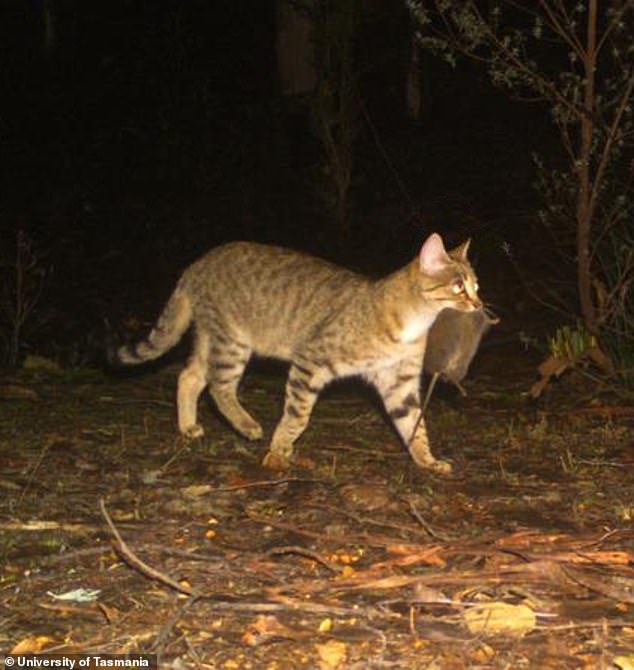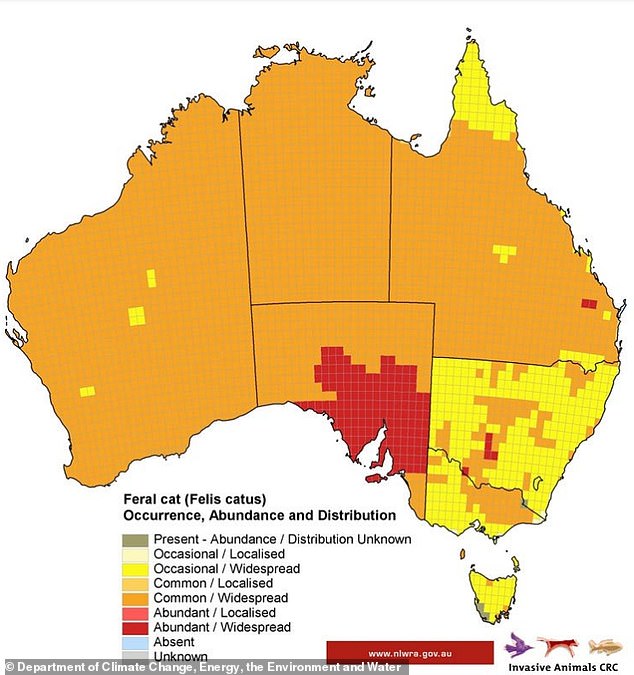Meet the kowari: why this adorable native Australian animal could soon become extinct – and why everyone should care
Australia is home to more than 350 species of native mammals, 87 percent of which are found nowhere else on earth.
But with 39 of these species already extinct and another 110 listed as endangered, chances are many will disappear before you even knew they existed. So here’s one we think you just need to know (and save), before it’s too late.
The charismatic kowari is a small carnivorous marsupial.
Once common inland, it is now found only in the remote deserts of southwestern Queensland and northeastern South Australia, in less than 20 percent of its former range.
This tiny predator fits in the palm of your hand. His bright eyes, bushy tail and big personality make him the perfect role model for the Australian outback.
But with only 1,200 kowari left in the wild, the federal government upgraded its conservation status from vulnerable to endangered in November.
Reversing the decline of the Kowari is within our reach. But we need public support and political will to achieve this. It requires limiting the grazing of cattle and sheep, while controlling the number of feral cats.
The kowari, a native marsupial found in inland Australia, has recently been upgraded to an endangered species, largely thanks to feral cats
The kowari (Dasyuroides byrnei) is an expert hunter, chasing mice, tarantulas, moths, scorpions and even birds. They are alert and efficient and attack their prey voraciously.
The kowari, formerly known as the brush-tailed possum, or Byrne’s tufted-tailed marsupial, is more closely related to the Tasmanian devil and quolls.
The Wangkangurru Yarluyandi people use the name kowari, while the Dieri and Ngameni peoples use the similar-sounding name kariri.
Kowaris live in stony deserts. They mainly inhabit remote, treeless ‘gibberish plains’. These areas of flat, interlocking red pebbles form extensive sidewalks that could be mistaken for the surface of Mars.
Inland, where temperatures can exceed 50°C, kowaris beat the heat by sheltering in burrows dug into sandhills. At night they emerge to race across the plains, their heads and distinctive bushy tail held aloft, pausing frequently to search for predators and prey.
During cold winter days, kowaris slow down their metabolism to conserve energy. They enter a state of torpor, which is a daily version of hibernation.
At the two main sites in South Australia, the number of animals captured in trapping studies fell by 85% between 2000 and 2015. At this rate, the species could disappear from the area within twenty years.
It is estimated that the entire population numbers only 1,200 individuals, spread over just 350 square kilometers. That’s a combined area of less than 20 km x 20 km.
Based on this evidence, the conservation status of kowaris was upgraded from Vulnerable to Endangered in November last year.
Kowaris have been declining in numbers for some time, but are suddenly on the path to extinction. How is that possible when they live in one of the most vast and remote parts of Australia?
Threats include land degradation from livestock farming and predation from introduced feral cats and foxes.
But it’s complicated. Threats can combine and have a synergistic effect (greater than the sum of their parts). And then there are the climate influences.
Heavy rains in the desert trigger a cascade of events culminating in an explosion in feral cat numbers.
When conditions dry up again, the cats switch to eating larger or tougher prey such as bilbies and kowaris, often causing local die-offs. In south-west Queensland, feral cats most likely wiped out one population of kowaris and decimated another.

Feral cats are a major problem for the Kowari (one is pictured after hunting a native marsupial)

This map shows the distribution of millions of feral cats across Australia. They are more common in the outback and are abundant in parts of South Africa
Huge efforts to control cat infestations have so far saved the kowari and bilby populations in Astrebla Downs National Park from local extinction, but other areas have succumbed.
In South Africa, all remaining kowari populations are on pastoral stations used for livestock grazing.
Livestock can trample kowari burrows. They can also compact the sand piles, making it difficult for kowaris to build dens. And they eat the plants on the hills, reducing the availability of both food and shelter. This makes kowaris easy prey.
Pastoralism has intensified in recent decades. Nearly half of Australia (44%) is covered by pastoral leases where many threatened species occur.
Domestic animals usually graze near watering points such as bores and troughs. More and more drinking points are being constructed, to make a larger part of the pastoral lease accessible to livestock. The area protected from grazing is therefore becoming smaller and smaller as livestock encroach further into Kowari territory.
We have the knowledge and resources necessary to save this species from extinction. We just need decisive leadership and sufficient funding to put these plans into action.
State governments should provide more resources to desert parks so that rangers can monitor feral cat numbers and respond quickly to infestations. We can use new technology such as remote camera traps monitored via satellite. These measures would also protect the last remaining stronghold of the bilby in Queensland, another nationally endangered mammal.
The pastoral industry and governments must work together to review the placement of water points and reduce grazing pressure in the known kowari habitat.
By closing some pastoral water points and ensuring that a portion of each lease (potentially 20%) is out of water, we can limit damage to livestock and provide refuge for endangered species. Pastoral businesses could show leadership and implement these actions themselves rather than waiting for governments to act.
In the meantime, reintroduction to safe havens is an emergency measure that will help prevent the threatened extinction of the Kowari. In 2022, 12 kowaris were successfully reintroduced to the 123 square kilometer fenced Arid Recovery Reserve in northern South Africa.
The population has expanded since its release. Removing cats, foxes and pets from the reserve has given kowaris the chance to reclaim a small part of their former range.
But safe havens are small and we need to act on a larger scale. If we don’t, the kowari could become yet another Australian species lost before you even see it.
